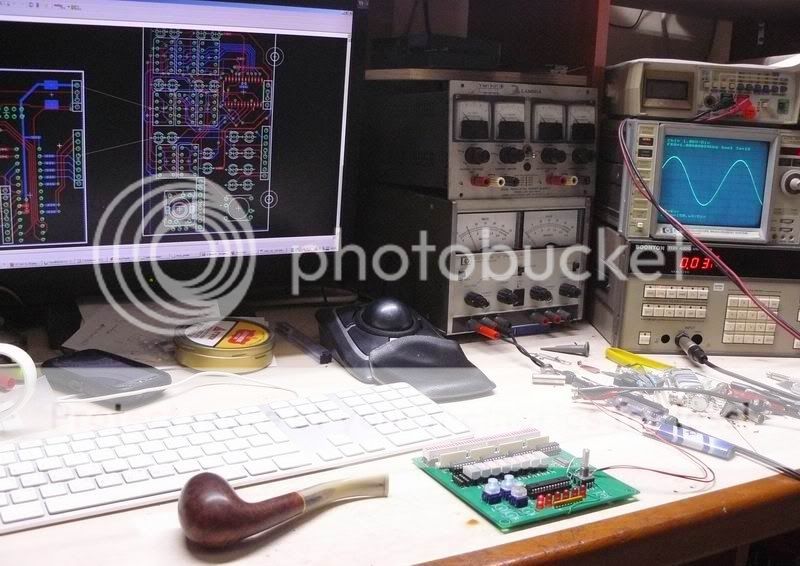andre tchmil said:
Yep! Why not?

ptron said:
Id be really happy to get an assembled front +faceplate and some sort of kit if its possible (maybe we can get some of those relays for cheap) im awful at sourcing parts. No SMD experience or chance to do any of that!
Yes, this is possible. Prepare to see front panel within a week - two. It's look will be THE killer!!!!!
Morbid and horrible, abandoned and disgusting!!!!!
chefducuisine said:
Whoa Igor - this looks terriffic !!!
Count me in... this will be the ideal companion for my MixBuzz1.
Already got some ideas for the FP Layout....
HP/LP could be Harrison, huh??
Regards,
Christian
TERRIFIC!!!!! No, PURE HORROR, Addams thing!!!!!!
Harrison, mean, these (see attached pic)?
I already draw the filters PCB, it is in-between UREI 546 and SSL's filters.
However, some other filters type which using pots as control can be implemented here.
I thought about ISA110 filters too, but comes up too much relays (have to switch the capacitors),
however, I am open for discussion.
noulou said:
Beautiful stuff as usual Igor!!!!


Any chance of adding a solo button for the different filters? Since the filters are in parrallel and everything is digitally controlled, it might not be so hard to implement. This would make work much faster while tuning the filters.
Any provision for DOAs in the audio path?
What is the widest Q you were thinking for the parametric bands? A Q of as little as 0.5 is many times of great help in a mastering situation.
Really looking forward to this. 8) 8) 8)
I have changed some things since last week.
Summing can have DOA's or opamps; input/output boards for now are 2 versions in development:
transformers, ll7101 and ll1524+DOA's, and transformerless (THAT/TI bal. line receivers/drivers).
Both types of I/O boards have digitally controlled input pad (-8...+6 dB in 2db steps), this opt can be ommited.
Sontec filter already done with DOA option.
All kinds of VSF better to make with very fast quad op-amps.
All DOA's can be feed from +/-24, and opamps from +/-17V.
Power supply for audio is +/-24V; it is down to +/-17V with regulators on motherboard, the back of case serves as heatsink.
The mother board rails are: +/-24, +/-17, agnd, band in, band out, clip out,
summing to gain +, summing to gain -, summing boost in, summing cut in, than, digital stuff : dgnd, +5V, sdi, sdo, data, clc, etc.
Band in and band out are shorted on parallel EQ filters.
This way, we can build the EQ with series or parallel filters.
Another issue with series/parallel EQ...
For example, SSL channel EQ or ISA110 or Maxi-Q are series equalizers; however,
I preserve the option to bypass each band and go completely pure.
A prob is each of these bands has phase reverse (inverted, unity gain).
In this case, inverting band's "bypass/on" signal goes to simple parity checker on motherboard and
than input's phase reversed in odd/not reversed in even qty of engaged bands.
Series bands simply don't go to the parity checker. As well, summing circuit: in case of Sontec,
there is one op-amp (DOA); in case of Neteq, there are two. Sontec is inverting, Neteq is not.
Summing board has its "parity" too, just have to install 2 jumpers in case of Sontec (inverting).
Widest Q: in case of Sontec, it can be in range approx. 0.3-3 oct. In case of Uni-Q, even bit more
shape'ey (up to 0.25 oct) and less wide, in min pos, than Sontec (about 2 oct).
SOLO. Yes, seems like great option. Has some probs to implement (can be solved, however, comes up as hardcore thing).
Let's take case of series EQ with Sontec topology: I have to feed signal to band (it's input already connected to GAIN),
than disconnect the other bands.
In case of parallel EQ like Neteq, it is easier. Just disconnect summing circuit from all bands and put gain of solo'ed band to MAX.
In case of series EQ, peace of cake - just not feed "direct" signal to band and keep filter in.
All this have to be unified to make solo available for all bands. Again, not easy, but I will sleep on this.
From the other side, each band can be bypassed completely.....is it not enough?

Well, the question: is the SOLO option necessary????



































